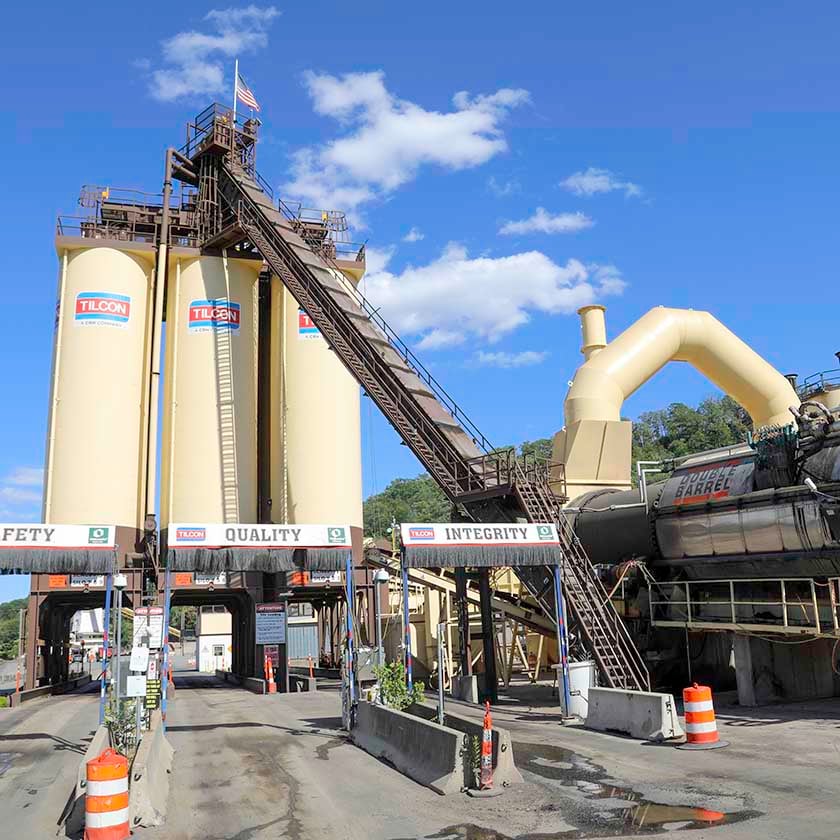Opening the Keys of Warm Mix Asphalt Modern Technology
Discovering the midsts of warm mix asphalt modern technology uncovers a globe where specific solutions and thorough procedures assemble to shape our roads and framework. The blend of binders, aggregates, and fillers isn't just a building task but a strategic orchestration of durability and efficiency. As we peer right into the complex dance of components, a tapestry of strength and sustainability unravels. However what lies under this surface area of asphaltic mastery, and what secrets wait to be introduced in the world of paving technologies?
Value of Hot Mix Asphalt
Warm Mix Asphalt plays an important role in contemporary infrastructure advancement due to its toughness and cost-effectiveness. As the most frequently used paving product for roads, highways, and parking area, Hot Mix Asphalt provides a series of advantages that contribute to its importance in building projects. One essential benefit is its capability to hold up against heavy traffic tons and rough climate condition, supplying a durable and reputable surface for transportation networks. Furthermore, Warm Mix Asphalt is cost-effective in both initial building and long-lasting upkeep, making it a favored selection for several infrastructure projects.
The sturdiness of Hot Mix Asphalt stems from its make-up, which includes accumulations, binder, and filler materials that are carefully chosen and mixed to fulfill particular efficiency demands. Overall, the value of Hot Mix Asphalt in framework development can not be underrated, as it continues to be a keystone of contemporary building and construction methods.
Elements of Asphalt Mixes
The composition of asphalt blends is composed of very carefully chosen accumulations, binder, and filler materials that are critical for achieving particular performance demands. Accumulations are the key part of asphalt blends, providing strength and stability. The binder, usually asphalt or asphalt concrete, holds the accumulations with each other and gives adaptability and sturdiness to the mix.
The combination and proportion of these elements play a substantial duty in establishing the top quality and efficiency of the asphalt mix. Designers meticulously design the mix to meet particular demands, thinking about aspects like web traffic quantity, climate problems, and pavement life expectancy. Appropriate choice and balancing of aggregates, binder, and fillers are vital for producing durable, durable asphalt sidewalks.
Combining and Production Techniques

When the accumulations are chosen, the binder, commonly asphalt concrete, is contributed to bind the products with each other. The binder's top quality and amount dramatically influence the mix's toughness, resistance, and adaptability to environmental factors. In addition, fillers like moisturized lime or Rose city cement may be incorporated to boost details features of the asphalt mix, such as its workability or dampness resistance.
During production, the accumulations and binder are warmed, normally between 250-325 ° F(121-163 ° C ), to help with mixing and make certain correct finish of the accumulations. The mixing procedure needs to be complete to accomplish a homogeneous combination that advertises the desired efficiency attributes of the asphalt. Different techniques, such as set mixing or drum mixing, are used to accomplish consistent and top quality asphalt mixes find for building and construction jobs.
Elements Impacting Asphalt Efficiency
Aspects influencing asphalt efficiency include a variety of variables that influence the sturdiness, durability, and overall quality of asphalt sidewalks. One key aspect is the quality of products made use of in the asphalt mix. The type and resource of aggregates, the binder high quality, and the ingredients all play a considerable duty in identifying the efficiency of the asphalt sidewalk. The gradation of aggregates is crucial as it impacts the mix's security, resistance, and workability to breaking and rutting.

Ecological conditions also affect asphalt performance. Temperature variants, moisture seepage, and website traffic tons can all influence the structural stability of the sidewalk. Design considerations, such as sidewalk thickness and drain, are crucial in guaranteeing the lasting efficiency of the asphalt pavement. By very carefully taking into consideration these engineers, elements and specialists can enhance asphalt efficiency and boost the life span of sidewalks.
Lasting Practices in Asphalt Modern Technology

WMA allows for the production and positioning of asphalt mixes at lower temperature levels compared to standard hot-mix asphalt, resulting in reduced energy intake and greenhouse gas exhausts. The use of porous asphalt blends can aid reduce stormwater drainage issues by enabling water to penetrate via the pavement and into the ground, advertising all-natural water filtration and charge procedures.
Verdict
In final thought, hot mix asphalt innovation plays a critical duty in modern infrastructure development due to its address toughness and cost-effectiveness. By meticulously stabilizing parts, using correct blending strategies, and taking into consideration numerous aspects, designers can produce top notch asphalt mixes that stand up to heavy web traffic loads and severe weather. Embracing lasting techniques, such as utilizing warm-mix technologies and recycled materials, better boosts the ecological friendliness of asphalt technology.
Blending and production techniques in warm mix asphalt innovation involve the precise mix and processing of aggregates, binder, and fillers to develop a resilient and high-performance asphalt mix.Factors affecting asphalt performance incorporate a variety of variables that impact the durability, long life, and overall top quality of asphalt sidewalks. Sustainable methods in asphalt technology incorporate different initiatives intended at reducing the ecological impact of asphalt manufacturing and paving processes. By including recovered asphalt pavement (RAP) and recycled asphalt roof shingles (RAS) into new asphalt blends, the market can significantly minimize the consumption of raw products and energy, while likewise decreasing garbage dump waste.
WMA allows for the production and positioning of asphalt mixes at reduced temperature levels compared to typical hot-mix asphalt, resulting in decreased power intake and greenhouse gas discharges.